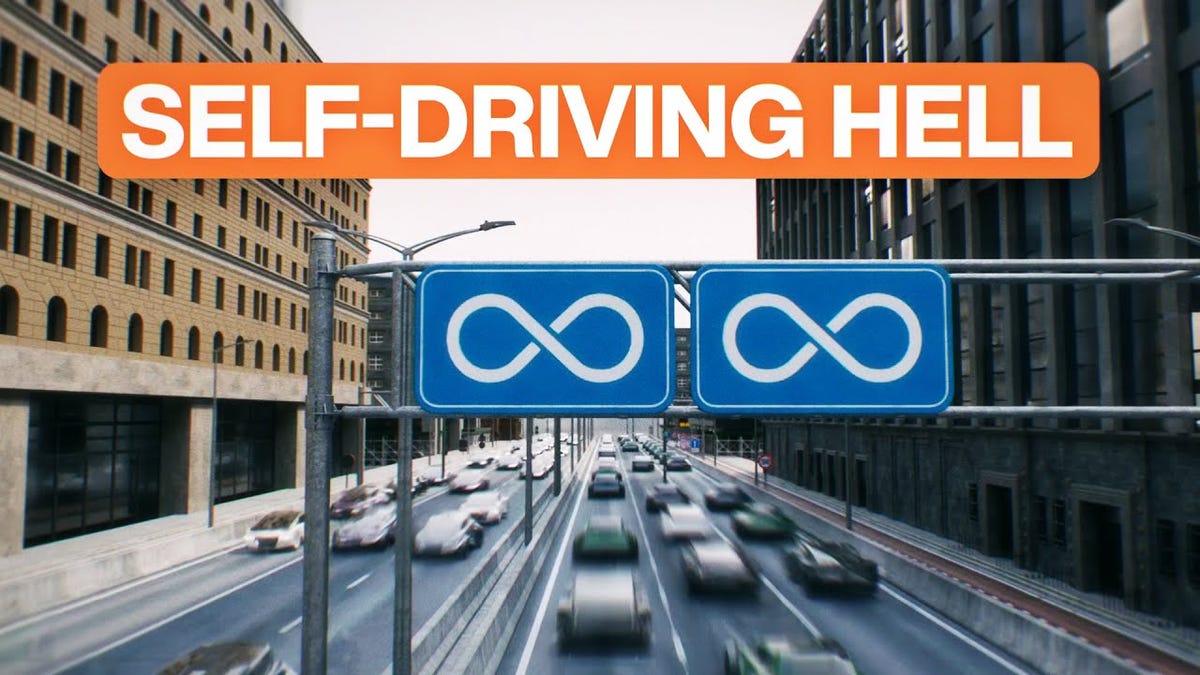If you’re delusional enough to believe Tesla CEO and Unelected Co-President Elon Musk, cheap robotaxis are just around the corner, ready to revolutionize transportation as we know it. They aren’t, but even if they were, the idea that they would actually make society better is just as ridiculous as Musk’s claim that he can build a true self-driving car for $30,000. At least if you care about other people and want them to live better lives, as our friends at Not Just Bikes points out in a recent video.
With an estimated $160 billion invested so far, companies have already put a ton of money into developing autonomous vehicles, and the promise of replacing drivers with computers has been a futurist dream for a long time. It makes sense that so many people are excited to see robotaxi prototypes in a few cities and to hear the richest deadbeat dad in the world talk about how a Cybercab could be yours by the end of 2026. Having seen what can go wrong with robotaxis operating in urban environments, though, it’s obvious we still have a long way to go from a safety perspective.
Even if you fixed those problems and created the perfect robotaxi, though, there are still plenty of downsides to handing our cities over to an army of self-driving cars. For example, what happens when a city wants to redesign an intersection or a street to make it safer for people? Self-driving cars are going to need updates to handle those changes, and while the corporations behind them should be able to handle it, it also opens up the opportunity for companies like Google to pressure local officials to optimize streets for robotaxis and skip the improvements that make areas friendlier to humans.
One of the big promises of self-driving cars is that they’ll reduce congestion and improve trip times. Humans are flawed and inefficient, but apparently, the efficiency of computers will save us. The problem is that, as Not Just Bikes points out, we already have decades of evidence that shows people take more trips and travel further any time driving gets cheaper and more convenient. It happens when you widen roads, and it happened when Uber and Lyft took off, too.
In theory, robotaxis could park out of the way until they’re needed, thus reducing the number of cars on the road at any given time, but if one taxi can get there in five minutes, and the other taxi needs 15, most people will go with the faster option. That directly incentivizes the companies to keep their cars nearby. Also, urban sprawl has made cities so physically large, the nearest “parking lot on the edge of town” could easily be far further out than would realistically be feasible.
Those who already have a long commute will probably benefit initially since they’ll be able to work, nap, or do literally anything else while sitting in traffic. At the same time, though, designing our transportation infrastructure around the desires of people who live outside the cities they visit hurts the cities themselves and promotes even more sprawl. Will those people want to cover the added cost of water, sewer and electrical infrastructure needed to support their growing communities? Of course not. That’s why so many rural and suburban areas either have a looming debt crisis or are currently experiencing one.
It’s a long video that goes into far more detail than we have the time to summarize here, so be sure to give the whole thing a watch.


